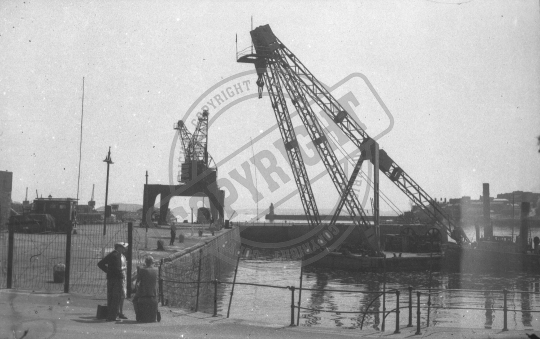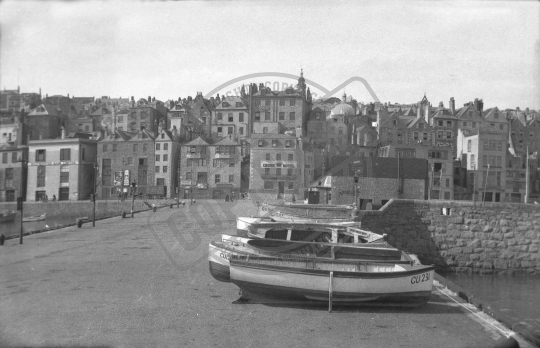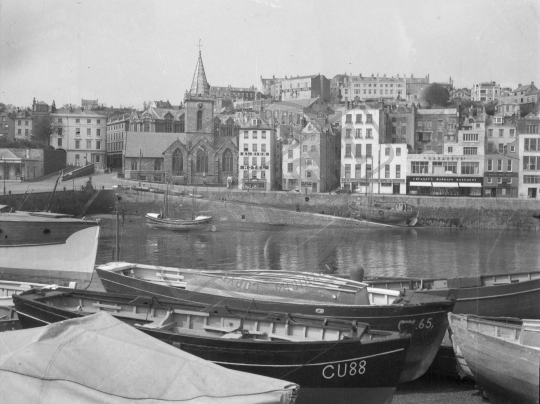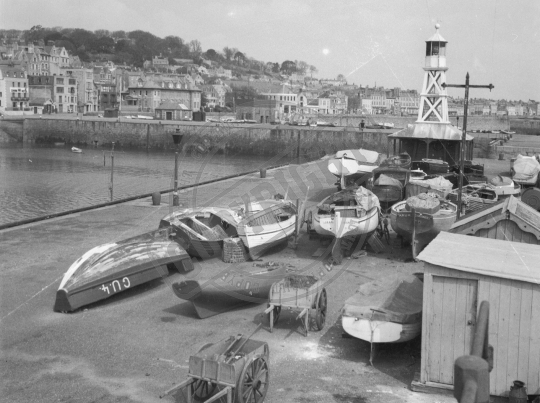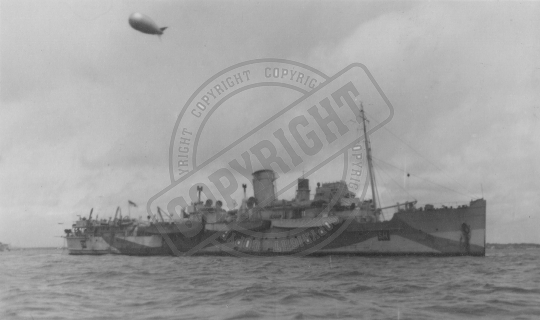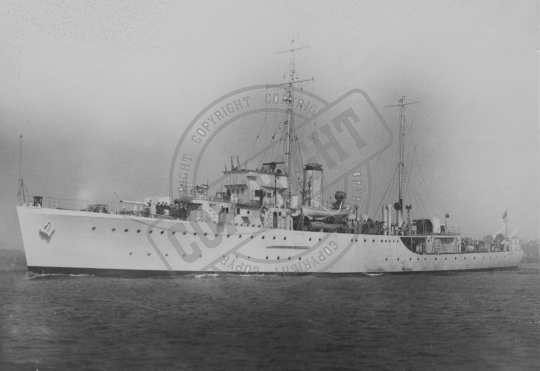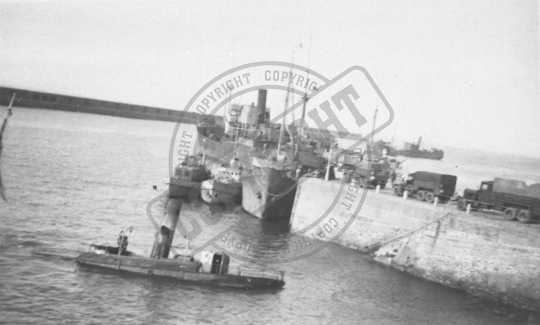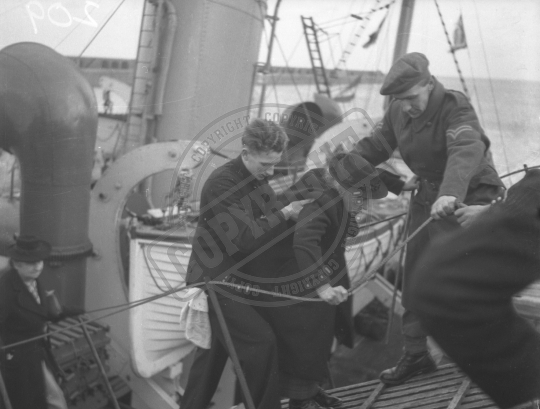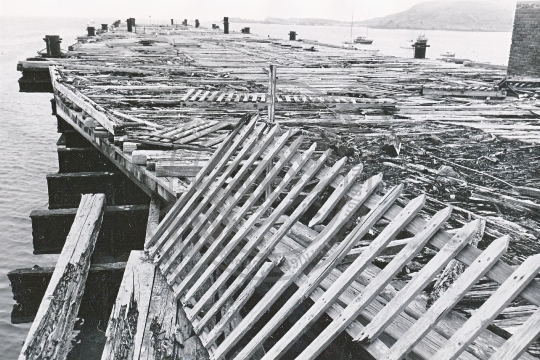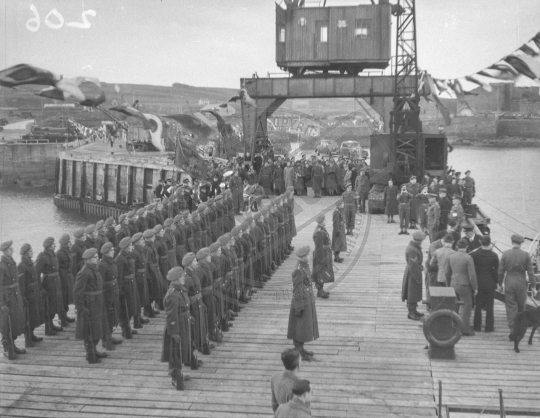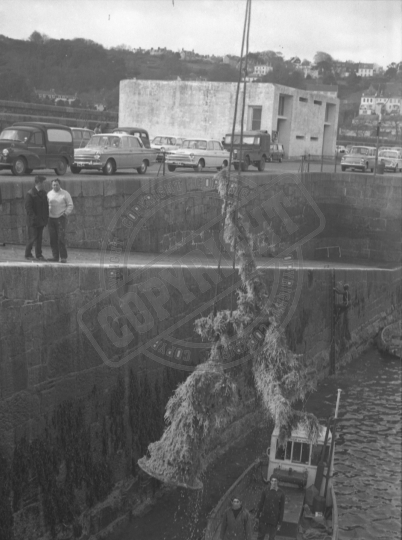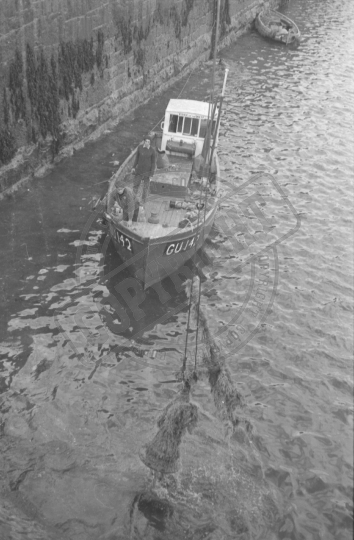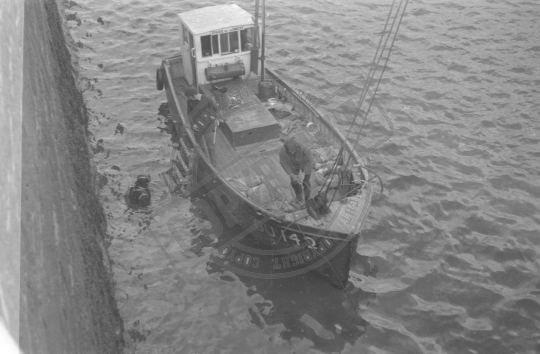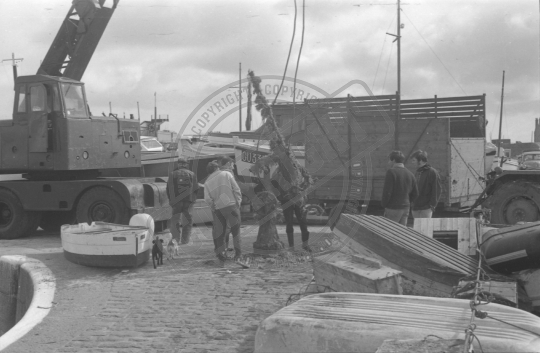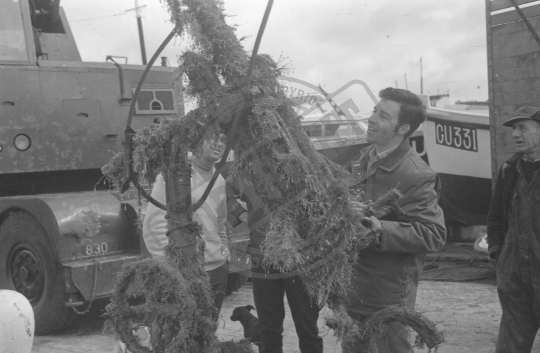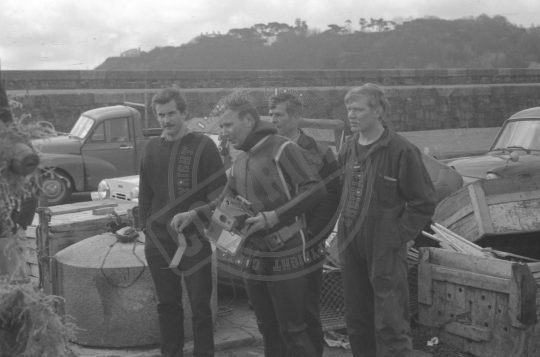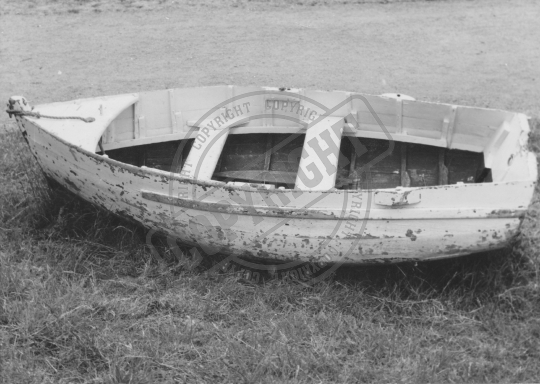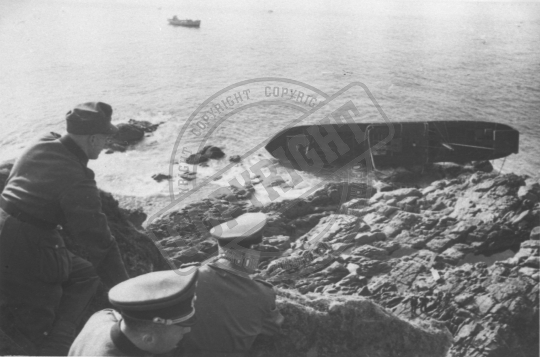Maritime (20)
MT_0003
A view of the Careening Hard at half tide, note the bomb and shrapnel damage on the raised walkway just before the end of the pier resulting from the air raid on the evening of 28 June 1940.
TPL_00377
The floating crane 'Antee’ being manoeuvred in the Old Harbour now better known now as the Albert Marina. This crane was used to offload many of the supplies brought to the island by the Germans including construction supplies and artillery pieces. The pier was fenced off to the public, in the background you can see a number of radio vehicles sited on the Crown Pier.
TPL_00256
Fishing boats laid up at the Old Harbour, St Peter Port, following the order for all boats to be moved to main harbours.
TPL_00255
Fishing boats laid up at the Old Harbour, St Peter Port, following the order for all boats to be moved to main harbours.
TPL_00254
Fishing boats laid up at the Old Harbour, St Peter Port, following the order for all boats to be moved to main harbours.
OA_024
Photograph of LSI (H) St Helier in 'D-Day’ camouflage carrying Landing Craft Assault and flying her Anti-Aircraft balloon. The reverse has been endorsed, “Passed for transmission through the post but not good for publication.” There are also two signatures, T. McBryde and P. J. Hickson, Surg. Lieut., RNVR, and an oval cachet in red, “Commanding Officer H.M.S. “St Helier” – 8 Feb 1945.” St Helier downed a German Stuka and rescued 10,200 troops at Dunkirk.
OA_001
Captain Glasson, Elder Brother of Trinity House, and two other officials arrived at Guernsey in HMS Leith on 17th May, 1945. They visited Les Hanois Lighthouse off the west coast of Guernsey and the lighthouses on Sark and Alderney.
TPL_00253
The sunken ship Staffa in Braye harbour, Alderney. The ship was loaded with parsnips and due to leave for Guernsey before breaking away from here mooring.
TPL_00252
Mrs Bessie Duplain disembarking from SS Autocarrier on her return to Alderney in December 1945.
TPL_00251
The German jetty at Braye Harbour, Alderney in advanced stages of decay. The jetty comprised of two Krupp sections linked to a Dortmunder Union section which in turn was connected to the existing harbour. The jetty was designed for use as an improvised harbour during Operation Sealion. It was finally demolished in 1979.
TPL_00241
Alderney’s greeting to repatriated islanders who returned in December 1945 after an absence of over five years. This marked one of the happiest days in islander’s history. Homecomers who had not seen their island since June 1940 stepped ashore to a warm welcome.
TPL_00250
20mm anti-aircraft gun salvaged in April 1969 by Mr Len Mecham and his crew of divers from the wreck of the VP209 'Dr. Rudolph Wahrenorff'. On cleaning the barnacles from the remains of the magazine five 20mm rounds were revealed.
TPL_00249
20mm anti-aircraft gun salvaged in April 1969 by Mr Len Mecham and his crew of divers from the wreck of the VP209 'Dr. Rudolph Wahrenorff'. On cleaning the barnacles from the remains of the magazine five 20mm rounds were revealed.
TPL_00248
20mm anti-aircraft gun salvaged in April 1969 by Mr Len Mecham and his crew of divers from the wreck of the VP209 'Dr. Rudolph Wahrenorff'. On cleaning the barnacles from the remains of the magazine five 20mm rounds were revealed.
TPL_00247
20mm anti-aircraft gun salvaged in April 1969 by Mr Len Mecham and his crew of divers from the wreck of the VP209 'Dr. Rudolph Wahrenorff'. On cleaning the barnacles from the remains of the magazine five 20mm rounds were revealed.
TPL_00246
20mm anti-aircraft gun salvaged in April 1969 by Mr Len Mecham and his crew of divers from the wreck of the VP209 'Dr. Rudolph Wahrenorff'. On cleaning the barnacles from the remains of the magazine five 20mm rounds were revealed.
TPL_00245
20mm anti-aircraft gun salvaged in April 1969 by Mr Len Mecham and his crew of divers from the wreck of the VP209 'Dr. Rudolph Wahrenorff'. On cleaning the barnacles from the remains of the magazine five 20mm rounds were revealed.
TPL_00244
The 8-foot dinghy in which Dennis Vibert escaped from Jersey to England in September 1941.
TPL_00243
One of the many ships used by the Germans to transport war material to the islands which came to grief on the treacherous north coast of Jersey.




